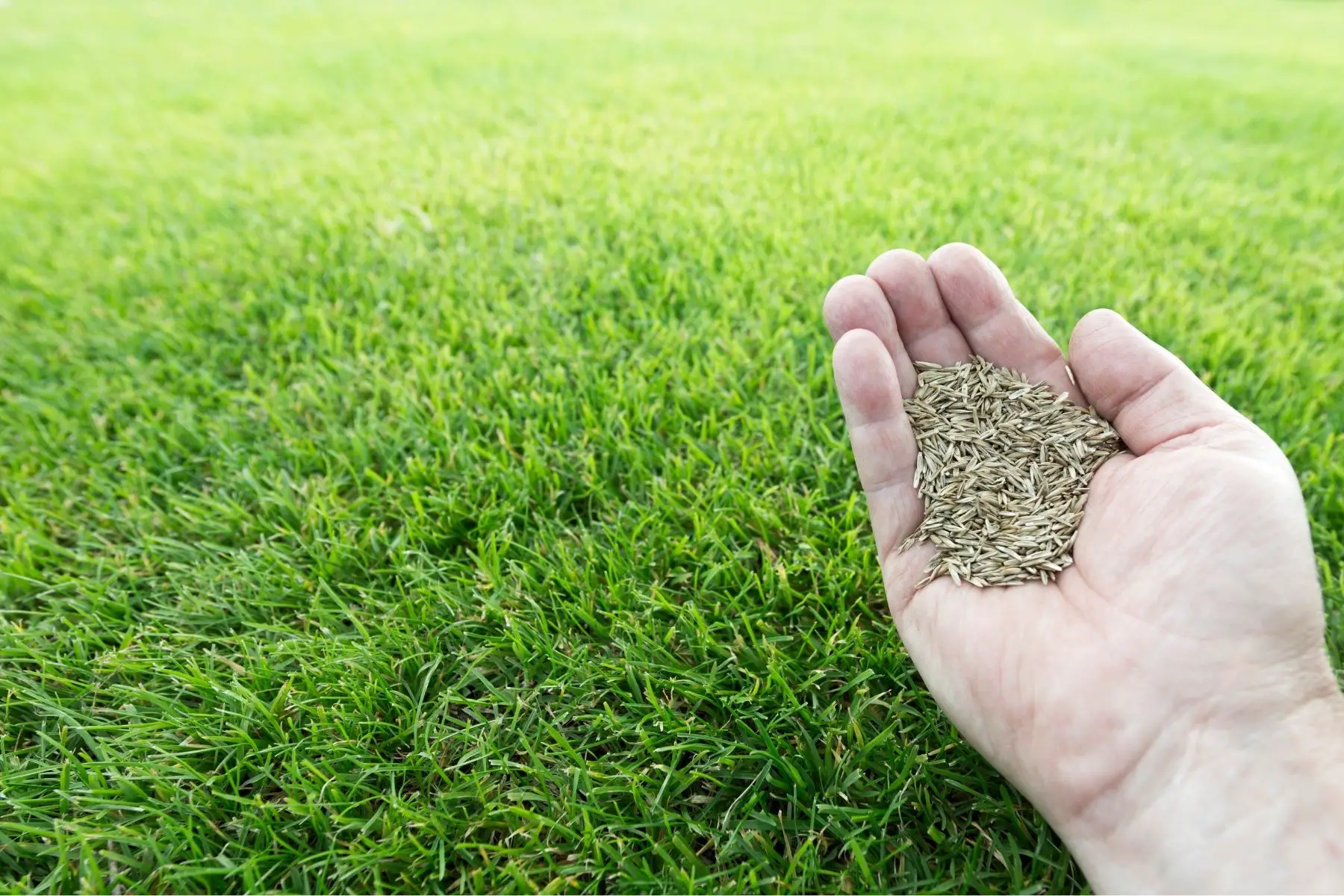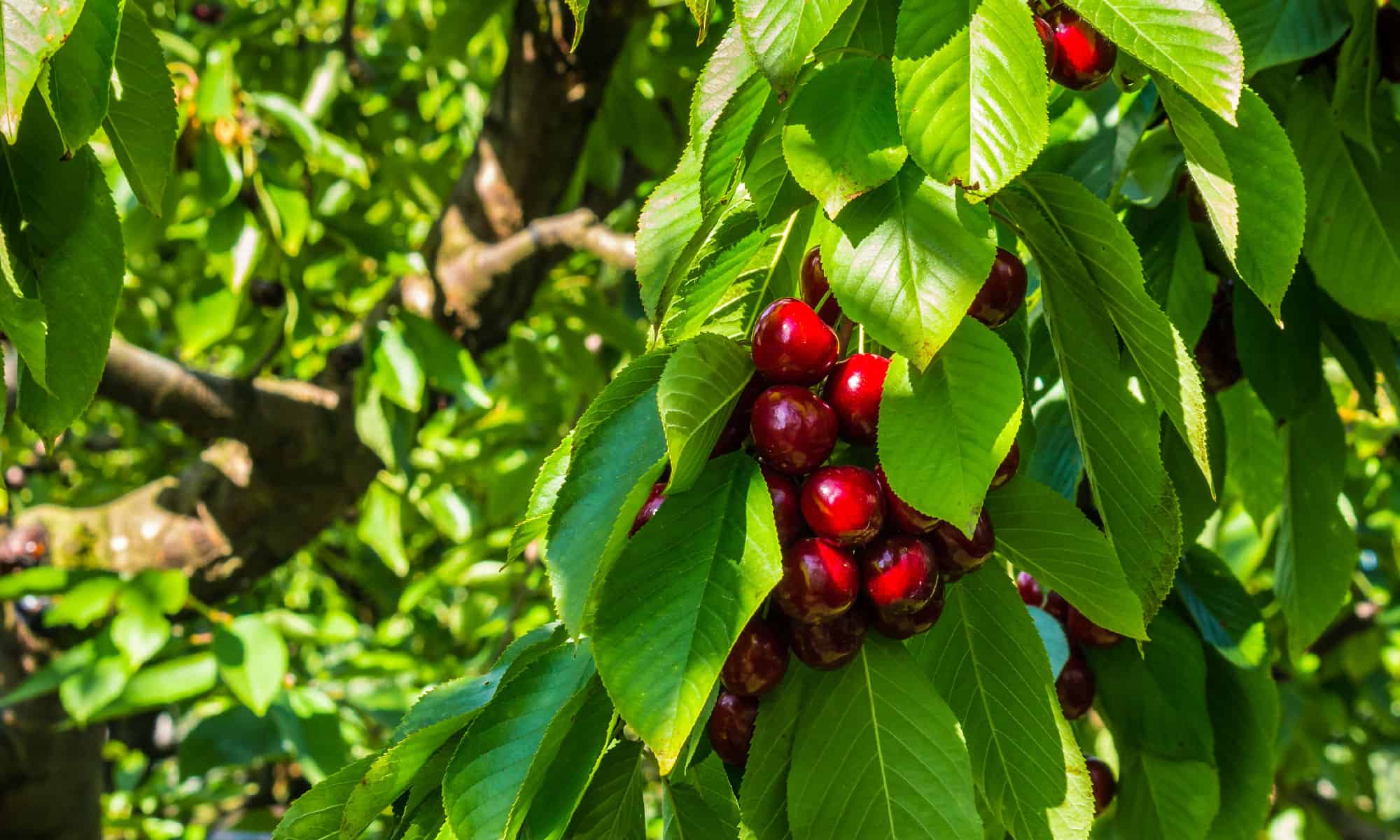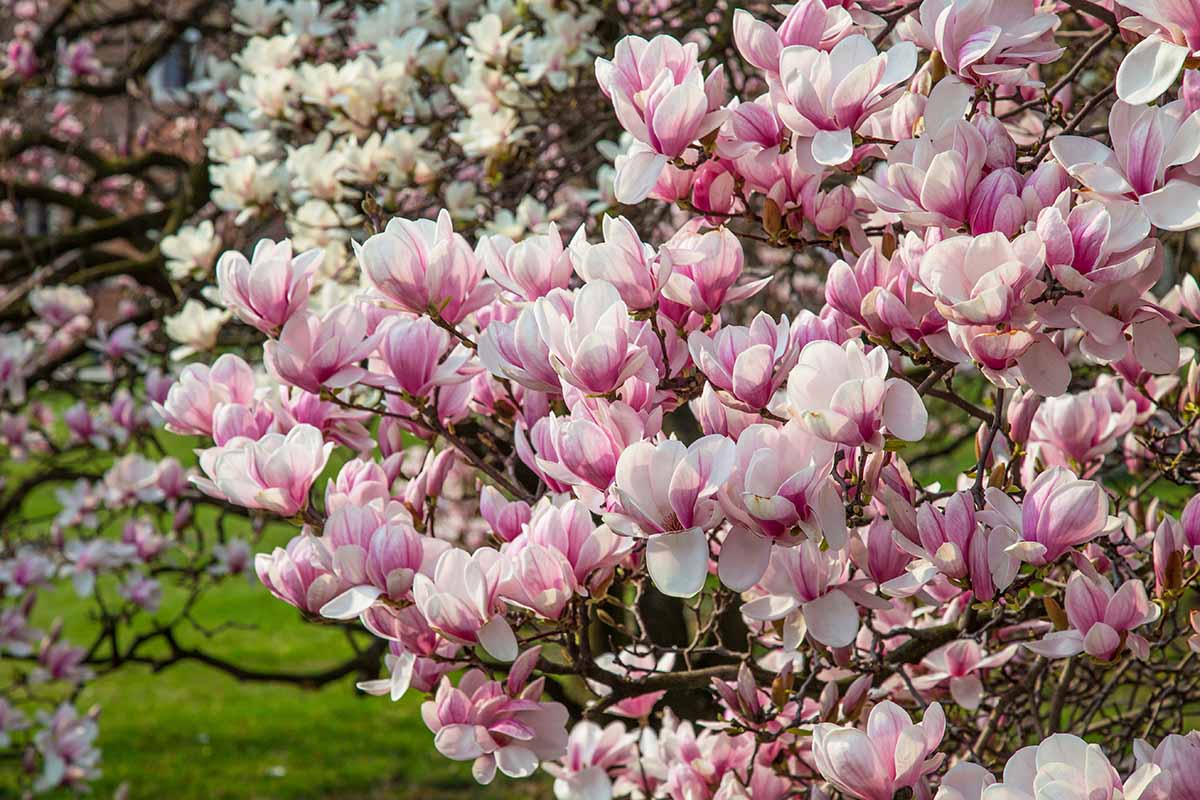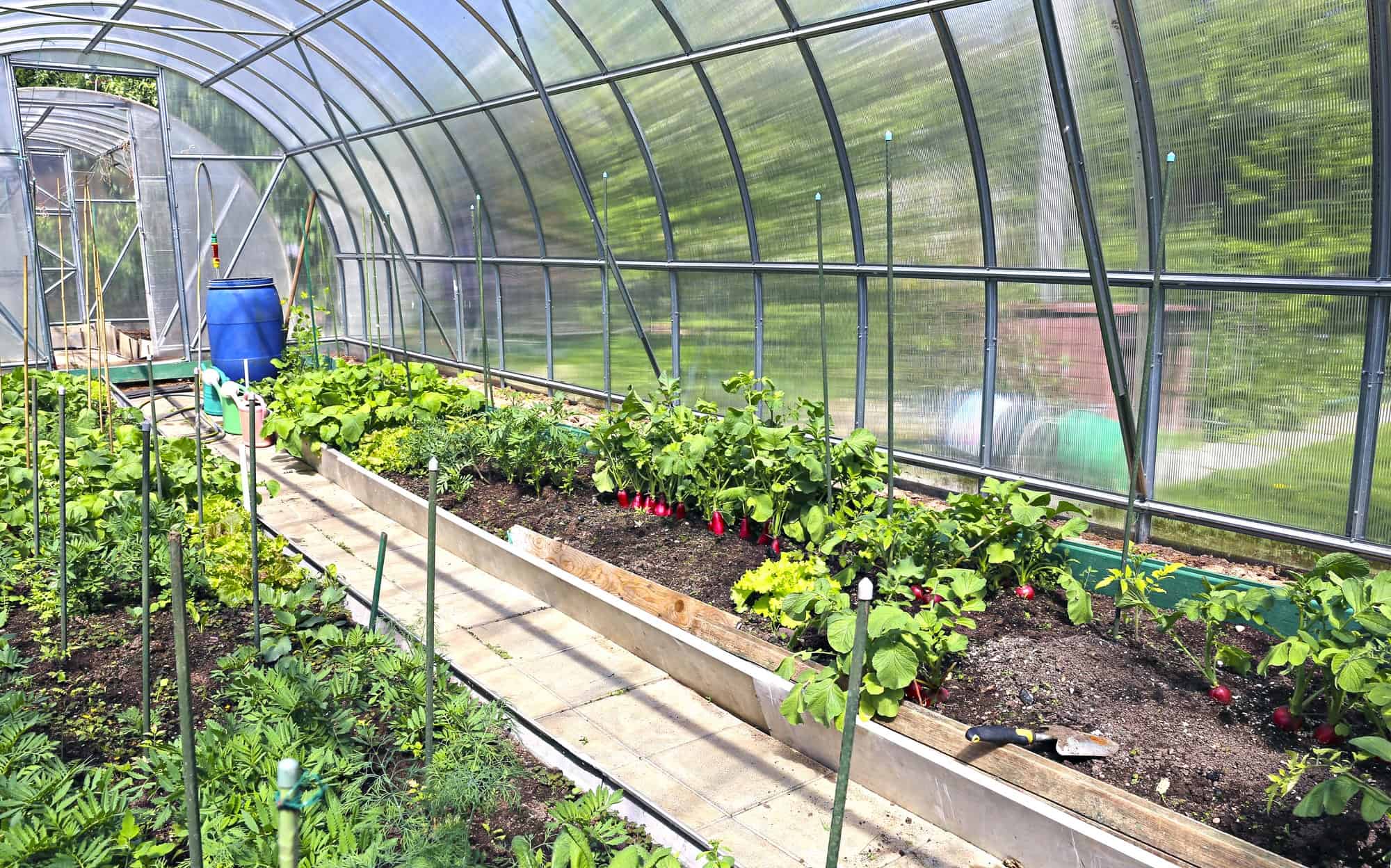Home>Types of Gardening>Ornamental Gardening>How Long Do Bulbs Take To Grow


Ornamental Gardening
How Long Do Bulbs Take To Grow
Published: January 23, 2024
Discover how long it takes for bulbs to grow in your ornamental garden. Learn expert tips to cultivate beautiful blooms in a timely manner.
(Many of the links in this article redirect to a specific reviewed product. Your purchase of these products through affiliate links helps to generate commission for Chicagolandgardening.com, at no extra cost. Learn more)
Table of Contents
Introduction
Welcome to the fascinating world of ornamental gardening! If you’re passionate about beautifying your outdoor space with vibrant and visually striking plants, then you’re in the right place. Ornamental gardening is the art of creating a visually appealing and aesthetically pleasing garden using a variety of plants, including flowers, shrubs, trees, and other decorative elements.
Unlike practical gardening, which focuses on producing fruits and vegetables, ornamental gardening allows you to express your creativity and personalize your outdoor space. Whether you have a small balcony, a spacious backyard, or even just a few pots, you can create a stunning display that will wow your visitors and provide you with a space to relax and enjoy nature.
Ornamental gardening offers a wide range of possibilities, from traditional flower beds to intricate topiaries and Japanese-inspired Zen gardens. It is a versatile and rewarding hobby that allows you to experiment with different colors, textures, and arrangements to create a truly unique and enchanting space.
In this comprehensive guide, we will explore the various aspects of ornamental gardening, including plant selection, design principles, maintenance techniques, and more. Whether you’re a beginner or an experienced gardener looking to expand your knowledge, this guide will provide you with valuable insights and guidance to help you create your own stunning and captivating ornamental garden.
So, put on your gardening gloves and let’s dive into the world of ornamental gardening, where nature and art intertwine to create a feast for the senses. Get ready to unleash your creativity, nurture beautiful plants, and transform your outdoor space into a place of beauty and tranquility.
Understanding Bulb Growth
Bulbs are fascinating plants with a unique growth cycle. Understanding how bulbs grow is essential to cultivating them successfully in your ornamental garden. So, let’s take a closer look at the process of bulb growth.
At its simplest, a bulb is an underground storage organ consisting of a modified stem surrounded by fleshy leaves or scales. This structure allows the bulb to store energy and nutrients, enabling the plant to survive adverse conditions and complete its life cycle.
When a bulb is planted in the ground or a container, it goes through a series of growth phases. Firstly, the bulb rests during the winter or dormant season. This period of dormancy is crucial for the bulb’s development and prepares it for future growth. It is important to provide the bulb with the necessary chilling period during winter to stimulate healthy growth.
As temperatures warm up and daylight hours increase, the bulb starts to awaken from its dormant state. This triggers the second phase, known as the sprouting phase. During this stage, the bulb absorbs moisture and nutrients from the soil, and the stored energy within the bulb begins to fuel growth.
Next comes the third phase, where the bulb develops roots. The roots grow from the base of the bulb and anchor it into the soil while absorbing water and nutrients. Adequate moisture is critical during this stage to support root development and ensure the bulb gets the necessary resources to thrive.
With a strong root system established, the bulb enters the fourth phase: foliage growth. The energy stored in the bulb fuels the emergence of leaves, which gather sunlight to convert into energy through photosynthesis. The foliage provides the necessary nutrients for the bulb to continue growing and developing.
Finally, in the fifth phase, flowering occurs. This is the culmination of the bulb’s growth cycle, where it produces beautiful blooms. The length of time it takes for a bulb to reach the flowering stage varies depending on the type of bulb and other factors, which we will explore in more detail later.
Understanding the growth stages of bulbs will help you plan and care for your ornamental garden more effectively. By providing the right conditions and nurturing the bulb through its growth cycle, you can enjoy a stunning display of flowers and ensure the longevity of your bulb’s life.
Factors Affecting Bulb Growth Time
The time it takes for a bulb to complete its growth cycle and reach the flowering stage can vary depending on several factors. Understanding these factors will help you manage your ornamental gardening expectations and optimize the growth time of your bulbs. Let’s explore some of the key factors that can influence bulb growth time.
1. Bulb Type: Different types of bulbs have varying growth rates. Some bulbs, such as daffodils and crocuses, have a relatively short growth time and may flower within a few weeks after planting. Others, like tulips and lilies, may take longer, ranging from several weeks to a few months. Researching and selecting bulbs with growth times that align with your gardening preferences can ensure a satisfying and timely display of flowers.
2. Climate and Season: The climate and season in which you are planting play a significant role in bulb growth time. Bulbs require specific temperature ranges and photoperiods (length of daylight) to progress through their growth stages. Planting bulbs in the appropriate season and in a climate that suits their needs will facilitate prompt and healthy growth. For example, spring-flowering bulbs thrive in cooler climates, while summer-flowering bulbs prefer warmer temperatures.
3. Soil Conditions: The quality and composition of the soil can impact bulb growth. Well-draining soil is crucial to prevent waterlogged conditions that can lead to root rot and stunted growth. The presence of organic matter, such as compost, can improve soil fertility and enhance nutrient availability. Conduct a soil test to assess pH levels and make any necessary amendments to create an optimal growing environment for your bulbs.
4. Watering and Irrigation: Proper watering is crucial for healthy bulb growth. Overwatering can lead to root diseases, while underwatering can result in stunted growth. Provide regular and consistent moisture, especially during the critical growth stages. Mulching around bulbs can help retain moisture and regulate soil temperature, promoting optimal growth conditions.
5. Light Exposure: The amount of sunlight a bulb receives directly affects its growth time. Most bulbs require full sun to thrive and reach their flowering potential. Ensure that your bulbs are planted in a location that receives adequate sunlight. If you have limited sunlight in your garden, consider plants that tolerate partial shade and adjust your bulb selection accordingly.
6. Planting Depth: Planting bulbs at the appropriate depth is crucial for their development. Different types of bulbs have specific planting depth requirements. If planted too shallow, bulbs may not receive the necessary nutrients and may produce weak growth or fail to flower. Alternatively, planting bulbs too deep can delay their emergence and hinder flowering. Follow the recommended planting depth for each type of bulb to promote optimal growth.
By considering these factors and adjusting your gardening practices accordingly, you can influence and optimize the growth time of your bulbs. Remember, patience is key, as each bulb species has its own unique growth timeline. With proper care and attention, you can enjoy a stunning display of flowers and a flourishing ornamental garden.
Types of Bulbs and Their Growth Time
When it comes to bulb gardening, there is an astonishing variety of bulbs to choose from, each with its own unique growth time. Let’s explore some common types of bulbs and their general growth durations to help you plan your ornamental garden.
1. Tulips: Tulips are one of the most popular and iconic spring-flowering bulbs. They typically have a growth time of around 2 to 3 months from planting to flowering. However, the exact growth duration can vary depending on the cultivar and environmental conditions. Tulips come in a wide range of colors and varieties, allowing you to create a stunning display in your garden.
2. Narcissus (Daffodils): Daffodils are early spring bloomers that bring a burst of cheerful yellow to the garden. They have a relatively short growth time, usually taking around 4 to 6 weeks from planting to flowering. Daffodils are also known for their hardiness and ability to naturalize, making them a low-maintenance choice for your ornamental garden.
3. Crocus: Crocuses are early blooming bulbs that often symbolize the arrival of spring. These delightful flowers have a growth time of approximately 2 to 3 weeks from planting to flowering. Crocuses come in various colors, including shades of purple, yellow, and white, adding vibrant pops of color to your garden.
4. Lilies: Lilies are gorgeous, fragrant bulbs that are usually planted in late spring to early summer. The growth time for lilies can vary depending on the specific variety. Oriental lilies, for example, may take around 8 to 10 weeks from planting to flowering, while Asiatic lilies tend to have a slightly shorter growth period. The stunning blooms of lilies make them a favorite in many ornamental gardens.
5. Hyacinths: Hyacinths are known for their intense fragrance and stunning flower spikes. These spring-flowering bulbs typically have a growth time of approximately 6 to 8 weeks from planting to flowering. Hyacinths come in a wide range of colors, allowing you to create eye-catching displays and fill your garden with their delightful aroma.
6. Alliums: Alliums are ornamental onions that produce large, globe-shaped flower heads. These unique and architectural bulbs typically have a growth time of around 8 to 10 weeks from planting to flowering. Alliums come in various sizes and colors, adding drama and interest to your garden.
Remember that the growth time provided for each type of bulb is just a rough estimate. Actual growth durations can be influenced by factors such as climate, soil conditions, and bulb dormancy. It’s always a good idea to refer to specific planting guidelines for each bulb variety to ensure optimal growth and flowering.
By selecting a variety of bulbs with different growth times, you can create a succession of blooms throughout the seasons. This will provide your ornamental garden with a continuous display of colors and textures, ensuring visual interest and delight for you and your guests.
Planting Bulbs and Optimal Growing Conditions
Planting bulbs is an exciting and rewarding process that sets the foundation for a beautiful and thriving ornamental garden. To ensure the best results, it’s important to understand the proper techniques and provide optimal growing conditions for your bulbs. Let’s explore how to plant bulbs and create the ideal environment for their growth.
1. Choosing the Right Bulbs: Select bulbs that are healthy, firm, and free from any signs of disease or damage. Look for reputable suppliers and choose bulbs that are appropriate for your climate and soil conditions. Consider your garden’s sunlight exposure and plan your bulb selection accordingly.
2. Timing: Bulbs are typically planted in the fall before the ground freezes. This allows them to establish roots and go through the necessary chilling period required for proper growth. However, some bulbs, such as daffodils and tulips, can also be planted in early spring with success.
3. Soil Preparation: Prepare the planting area by loosening the soil and removing any weeds or debris. Bulbs prefer well-draining soil to prevent waterlogging, which can lead to bulb rot. If your soil is heavy or poorly draining, amend it with organic matter like compost to improve its structure and drainage capabilities.
4. Planting Depth: Bulbs should be planted at a depth that is approximately two to three times their own size. The general rule of thumb is to plant larger bulbs deeper than smaller bulbs. However, always refer to specific planting instructions for each bulb variety, as planting depths can vary.
5. Spacing: Space bulbs according to their recommended spacing guidelines to allow for proper airflow and avoid overcrowding. This not only ensures optimal growth but also helps prevent diseases and pest infestations.
6. Watering: After planting, give the bulbs a thorough watering to help settle the soil and provide them with initial moisture. Throughout the growing season, provide regular watering, especially during dry periods. However, be cautious not to overwater, as excessive moisture can lead to bulb rot.
7. Fertilizing: Before planting, incorporate a balanced bulb fertilizer into the soil following the manufacturer’s instructions. This will provide the necessary nutrients for healthy bulb growth. Additional fertilization during the growing season may be required for certain bulbs, so consult variety-specific guidelines.
8. Mulching: Apply a layer of organic mulch, such as straw or wood chips, around the planted bulbs. Mulching helps conserve moisture, regulate soil temperature, suppress weed growth, and improve overall bulb health. Avoid piling the mulch directly on top of the bulbs, as this can promote rotting.
9. Maintenance: Regularly monitor your bulbs for signs of pests, diseases, or nutrient deficiencies. Remove any faded or dead flowers to promote bulb energy reserves and prevent seed production. After the foliage has dried and turned yellow, you can remove it, but avoid cutting it too early, as the leaves are essential for the bulb’s energy storage.
By following these planting guidelines and providing optimal growing conditions, you are setting your bulbs up for success. Creating a favorable environment for bulb growth will not only result in healthy and vibrant plants but also ensure a stunning display of flowers in your ornamental garden.
Caring for Bulbs During Growth
Proper care during the growth stage is crucial for the well-being and performance of your bulbs. By providing essential care, you can ensure that your bulbs thrive and produce beautiful blooms. Let’s explore some important aspects of caring for bulbs during their growth phase.
1. Watering: Adequate watering is essential for healthy bulb growth. During dry periods, provide regular watering to keep the soil moist, but be careful not to overwater, as this can lead to bulb rot. Aim to keep the soil consistently moist, especially when the plants are actively growing and flowering.
2. Fertilizing: Maintaining proper nutrient levels is crucial for bulb health and flower production. Fertilize bulbs in early spring with a slow-release bulb fertilizer, following the package instructions. This will supply the necessary nutrients throughout the growing season. Avoid over-fertilizing, as it can lead to excessive foliage growth at the expense of bloom production.
3. Weed Control: Keep the area around your bulbs free from weeds, as they compete for nutrients and water. Regularly remove any weeds that sprout near your bulbs. Applying mulch around the bulbs can help suppress weed growth and maintain a tidy appearance.
4. Pest Management: Monitor your bulbs for any signs of pests, such as aphids, slugs, or bulb mites. Check the foliage and flowers regularly, and take appropriate measures to control pests if necessary. Organic pest control methods, such as handpicking or using insecticidal soap, can be effective for managing common bulb pests.
5. Support for Tall Varieties: Some bulb varieties, such as giant alliums or tall lilies, may require support to prevent them from flopping over. Use stakes or plant supports to prop up tall stems and help maintain an upright position. This will keep the flowers showcased and prevent damage to the plant.
6. Protection from Extreme Weather: Bulbs can be sensitive to extreme weather conditions. During periods of excessive heat, provide shade or temporary shelter to protect the bulbs from scorching. Similarly, during severe cold snaps, cover the bulbs with a layer of mulch or horticultural fleece to insulate them from freezing temperatures.
7. Deadheading: Removing faded or spent flowers not only promotes a neat and tidy appearance but also prevents the bulbs from spending energy on seed production. Deadheading redirects the plant’s energy back into bulb growth and development, resulting in stronger bulbs for the following season.
8. Avoid Removing Foliage Too Early: It is important to allow the foliage to naturally die back after flowering. The leaves are responsible for collecting energy through photosynthesis and storing it in the bulbs for future growth. Removing the foliage too early can weaken the bulbs and affect their ability to produce flowers in subsequent years.
By providing proper care and attention to your bulbs during their growth stage, you are ensuring their optimal health and performance. Consistent watering, appropriate fertilization, pest management, and protection from extreme weather conditions will contribute to the successful growth and vibrant blooms of your ornamental garden bulbs.
Signs of Bulb Growth and Maturity
Recognizing the signs of bulb growth and maturity is essential for understanding the progress of your ornamental garden. By observing these signs, you can monitor the health of your bulbs and anticipate when they will reach their full blooming potential. Let’s explore some common signs that indicate bulb growth and maturity.
1. Emergence of Green Shoots: One of the first signs of bulb growth is the emergence of green shoots from the soil. These shoots will eventually develop into leaves or stems depending on the type of bulb. Keep an eye out for these fresh green shoots breaking through the surface of the ground.
2. Leaf Development: As bulbs continue to grow, their leaves will expand and develop. The foliage can range from broad and strap-like leaves to delicate and feathery foliage, depending on the bulb variety. Healthy leaves are typically vibrant green and provide the necessary energy for the bulb to grow and produce flowers.
3. Bud Formation: As the bulb matures, you will notice the formation of flower buds. These buds can appear as small, tightly closed structures at the top of the stem. The size, shape, and color of the buds will vary depending on the specific bulb variety. Watching the bud development is an exciting progression towards the ultimate blooming stage.
4. Flowering: The most anticipated sign of bulb growth is the arrival of blooms. The flowers will open up and reveal their vibrant colors and intricate structures. The blooming period can vary depending on the type of bulb, ranging from a few days to several weeks. Enjoy the beauty and fragrance of the flowers as they adorn your ornamental garden.
5. Extended Blooming Period: Some bulb varieties, such as daffodils and tulips, may bloom for a relatively short period, typically a few weeks. However, other bulbs, like lilies and alliums, can have a more extended blooming period, often lasting several weeks. The duration of the blooming period is dependent on the specific bulb variety and environmental factors.
6. Seed Production: After the flowers have fully bloomed, some bulbs may produce seed heads. These seed heads can vary in appearance, ranging from small capsules to intricate seed pods. While allowing the bulbs to produce seeds can be interesting for plant propagation, it might redirect the bulb’s energy away from bulb development and can potentially affect the quality of future blooms.
7. Fading and Drying of Foliage: Once the blooming period ends, the foliage of the bulb will gradually fade and turn yellow. This natural process indicates that the energy from the photosynthesis has been stored in the bulb to fuel future growth. Avoid prematurely removing the fading foliage, as it plays a crucial role in the bulb’s vitality.
By paying attention to these signs of bulb growth and maturity, you can assess the progress of your bulbs and better understand their life cycle. Appreciating each stage, from emergence to the final fading of foliage, allows you to fully immerse yourself in the wonder of bulb gardening and savor the beauty that unfolds in your ornamental garden.
Common Issues and Troubleshooting
While growing bulbs in your ornamental garden can be a rewarding experience, it is not without its challenges. Understanding common issues that may arise and having the knowledge to troubleshoot them will help ensure the success of your bulb growth. Let’s explore some common issues and how to address them.
1. Poor or No Flowering: One of the most frustrating problems is when bulbs fail to produce flowers. This can be due to various factors, including planting bulbs too shallow or too deep, inadequate sunlight, insufficient chilling period (for bulbs that require it), or overcrowding. Make sure to follow proper planting guidelines, provide the appropriate growing conditions, and give your bulbs enough time to establish before expecting blooms.
2. Pests and Diseases: Bulbs can be susceptible to pests and diseases such as aphids, slugs, fungal infections, or bulb rot. Regularly inspect your bulbs for any signs of damage or infestation. Use appropriate organic pest control methods, such as handpicking pests, applying natural insecticides, or using physical barriers like copper tape to prevent slugs from reaching your bulbs. Proper soil drainage, good air circulation, and avoiding overwatering can help prevent bulb rot and fungal diseases.
3. Deer and Rodent Damage: Bulbs can be a tasty treat for deer, squirrels, chipmunks, and other garden pests. To deter these creatures, consider using fencing, netting, or repellents with strong scents. You can also try planting bulbs that are less appealing to wildlife or use bulb-lifting devices that make it difficult for animals to dig up your bulbs.
4. Yellowing or Wilting Foliage: Yellowing or wilting foliage can be a sign of underwatering, overwatering, nutrient deficiencies, or bulb diseases. Ensure you are providing adequate, consistent moisture, but avoid waterlogged conditions. Perform a soil test to check nutrient levels and amend the soil as needed. If the problem persists, it may be necessary to dig up the bulbs, inspect them for signs of disease, and replant them in a different location with better growing conditions.
5. Stunted Growth: If your bulbs are showing slow or stunted growth, it may be due to poor soil quality, lack of sunlight, or improper planting depth. Check the soil for compaction or poor drainage issues and amend as necessary. Ensure your bulbs are getting enough sunlight, as insufficient light can result in weak or stunted growth. Review the recommended planting depth for each bulb variety and correct if necessary.
6. Failure to Naturalize: Some bulbs, like daffodils and crocuses, are known for their ability to naturalize and multiply over time. However, if your bulbs are not spreading or naturalizing as expected, it could be due to factors such as overcrowding, poor soil conditions, or unsuitable bulb varieties. Provide adequate spacing between bulbs to allow for proper airflow and division. Ensure your soil is well-draining and amend it with organic matter if necessary. Consider choosing bulb varieties that are known for their naturalizing tendencies.
Remember, gardening is a journey of continuous learning, and not every issue can be completely avoided. However, by being attentive, proactive, and implementing appropriate solutions, you can minimize problems and maximize the success of your ornamental garden bulbs.
Harvesting and Storing Bulbs
After enjoying the beauty of your flowering bulbs, you may wonder how to harvest and store them for future seasons. Proper harvesting and storage techniques are essential to ensure the longevity and vitality of your bulbs. Let’s explore the steps involved in harvesting and storing bulbs.
1. Timing: The best time to harvest bulbs is when the foliage has completely dried and turned yellow. This indicates that the plant has finished absorbing nutrients and the bulbs are in their dormant state. Avoid harvesting bulbs while the foliage is still green, as this can weaken the bulb and compromise its ability to produce future blooms.
2. Digging: Gently dig around the base of the plant, taking care not to damage the bulbs. Use a garden fork or shovel to loosen the soil and lift the bulbs out of the ground. Shake off excess soil, but avoid removing the papery outer layer of the bulb, known as the tunic, as it protects the bulb during storage.
3. Cleaning: After digging up the bulbs, clean off any remaining soil or debris. You can gently brush off loose dirt, or rinse the bulbs with water if necessary. Allow the bulbs to dry completely in a well-ventilated area for a few days.
4. Inspecting and Discarding: Before storing, carefully inspect each bulb for any signs of damage, rot, or disease. Discard any bulbs that appear diseased, soft, or damaged, as these can affect the health of other bulbs and compromise their ability to grow and flower in the future. Only store the healthy, firm bulbs.
5. Curing: Curing is an essential step in preparing bulbs for storage. Place the bulbs in a warm, dry, and well-ventilated area for a few weeks. This allows the bulbs to harden, heal any minor wounds, and initiate the dormancy phase necessary for proper growth in the next season.
6. Sorting and Labeling: Once the bulbs have cured, sort them according to size, variety, or any other desired categories. This will make it easier to organize and plan for planting in the future. Label the bulbs with the variety name and any additional information to prevent confusion during storage and retrieval.
7. Storage Conditions: Bulbs need to be stored in a cool, dry, and well-ventilated location. The ideal temperature for most bulbs is around 50°F to 60°F (10°C to 15°C). Avoid storing bulbs in moist or humid environments, as this can promote rot. A breathable storage container, such as mesh bags or cardboard boxes, can help provide the necessary airflow and prevent condensation. You can also include a desiccant, like silica gel, to absorb excess moisture.
8. Regular Monitoring: Regularly check on your stored bulbs throughout the storage period. Remove any bulbs that show signs of damage or decay to prevent spreading to the rest of the collection. Proper monitoring ensures the health and viability of your stored bulbs.
By following these steps for harvesting and storing bulbs, you can preserve the health and potential of your ornamental garden plants. With proper care and attention, your bulbs will be ready to be planted again in the next growing season, continuing the cycle of beautiful blooms in your garden.
Conclusion
Congratulations on embarking on your journey into the world of ornamental gardening! This comprehensive guide has provided you with valuable insights into the growth, care, and maintenance of bulbs in your garden. By understanding the stages of bulb growth, providing optimal conditions, and troubleshooting common issues, you are well-equipped to create a flourishing and visually stunning ornamental garden.
From the emergence of green shoots to the vibrant display of blooms, each stage of bulb growth is an exciting and rewarding experience. By selecting the right bulbs for your climate, preparing the soil, and giving them the appropriate care, you can witness the magic of nature unfolding in your garden.
Remember to pay attention to the signs of growth and maturity, ensuring proper watering, fertilizing, and protection from pests and diseases. By carefully harvesting and storing your bulbs, you can preserve their vitality for future seasons and continue to enjoy their beauty year after year.
As you immerse yourself in the art of ornamental gardening, embrace your creativity and personalize your outdoor space. Experiment with different color combinations, textures, and arrangements to create a garden that reflects your style and provides a sanctuary for relaxation and enjoyment.
Whether you have a small balcony, a spacious backyard, or anything in between, ornamental gardening allows you to express your passion for nature and create a stunning display that will captivate and inspire. So, don’t hesitate to get your hands dirty and let your imagination flourish as you embark on this delightful journey.
With the knowledge you’ve gained from this guide, it’s time to put it into action and watch your ornamental garden come to life with the beauty of bulbs. Enjoy the process, learn from your experiences, and savor the joys of creating a truly enchanting outdoor space.








